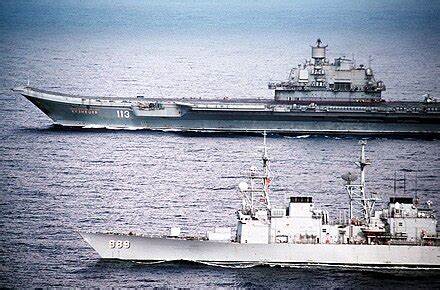
Amidst the swirl of criticism surrounding Russia’s military tactics and equipment quality, particularly highlighted by the ongoing Ukraine conflict, the plight of Russia’s sole aircraft carrier, the Admiral Kuznetsov, stands out as a symbol of the nation’s naval challenges.

The Admiral Kuznetsov’s litany of issues is not new. The carrier has encountered a range of issues encompassing mechanical failures, construction defects, as well as significant accidents such as fires and a crane crash.

The Kuznetsov is propelled by mazut, an outdated petrochemical that belches black smoke, signaling the vessel’s presence and its antiquated technology.

It has been sidelined from the Ukraine conflict entirely, succumbing to its persistent maintenance problems.

Experts have pointed to the Admiral Kuznetsov as the world’s worst aircraft carrier.

The 2022 fire that sent the carrier back to drydock was just one in a string of disasters that included a crane crash, the deaths of workers, and the loss of aircraft due to a faulty system.

In the wake of these events, one begins to question the strategic utility of this warship.

Despite these issues, the carrier remains an important strategic piece for Russia.

Russia’s oldest and sole aircraft carrier was named in honor of the esteemed Soviet Admiral Nikolay Gerasimovich Kuznetsov during the Cold War era.

Originally designated as “Riga,” the vessel underwent name changes to “Leonid Brezhnev” and later “Tbilisi” before being ultimately renamed Admiral Flota Sovetskogo Soyuza N.G. Kuznetsov prior to its maiden voyage.

Commissioned in the mid-1980s, the carrier was specifically designed to safeguard the USSR’s missile-carrying submarines and other naval vessels. Following the disintegration of the Soviet Union, Kuznetsov transitioned from the Black Sea to join the Northern Fleet.

Referred to by the Russian Navy as a “heavy aircraft-carrying cruiser,” the carrier has the capacity to accommodate a dozen Sukhoi Su-27s (known as Flanker by NATO), 16 Yakovlev Yak-41M (referred to as Freestyle) fixed-wing aircraft, along with various helicopter platforms.

Noteworthy features of the Kuznetsov include its armament, such as the Granit anti-ship missile system equipped with 12 surface-to-surface missile launchers.

Furthermore, the carrier is capable of carrying nearly 200 3K95 Kinzhal surface-to-air missiles.

Notably, the Kuznetsov’s use of a bow ramp for aircraft launch further limits its military effectiveness, constraining the weight and thus the fuel and ordnance that its planes can carry.
Relevant articles:
– Russia Needs to End Its Admiral Kuznetsov Aircraft Carrier Nightmare, The National Interest
– Russia’s Admiral Kuznetsov Aircraft Carrier Nightmare Is Here To Stay, The National Interest
– Admiral Kuznetsov: 5 Reasons Russia’s Only Aircraft Carrier Might Be Doomed, nationalinterest.org
